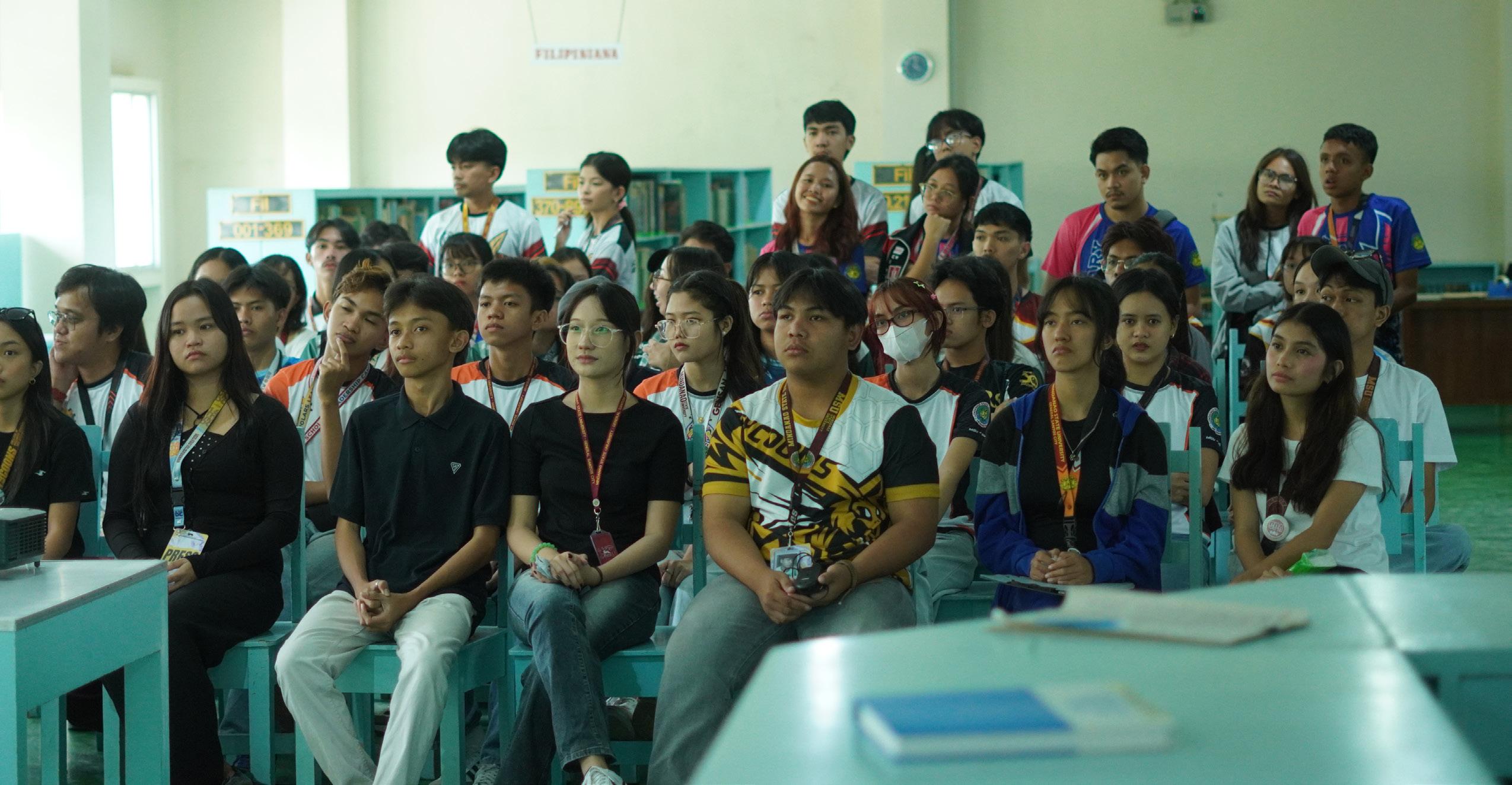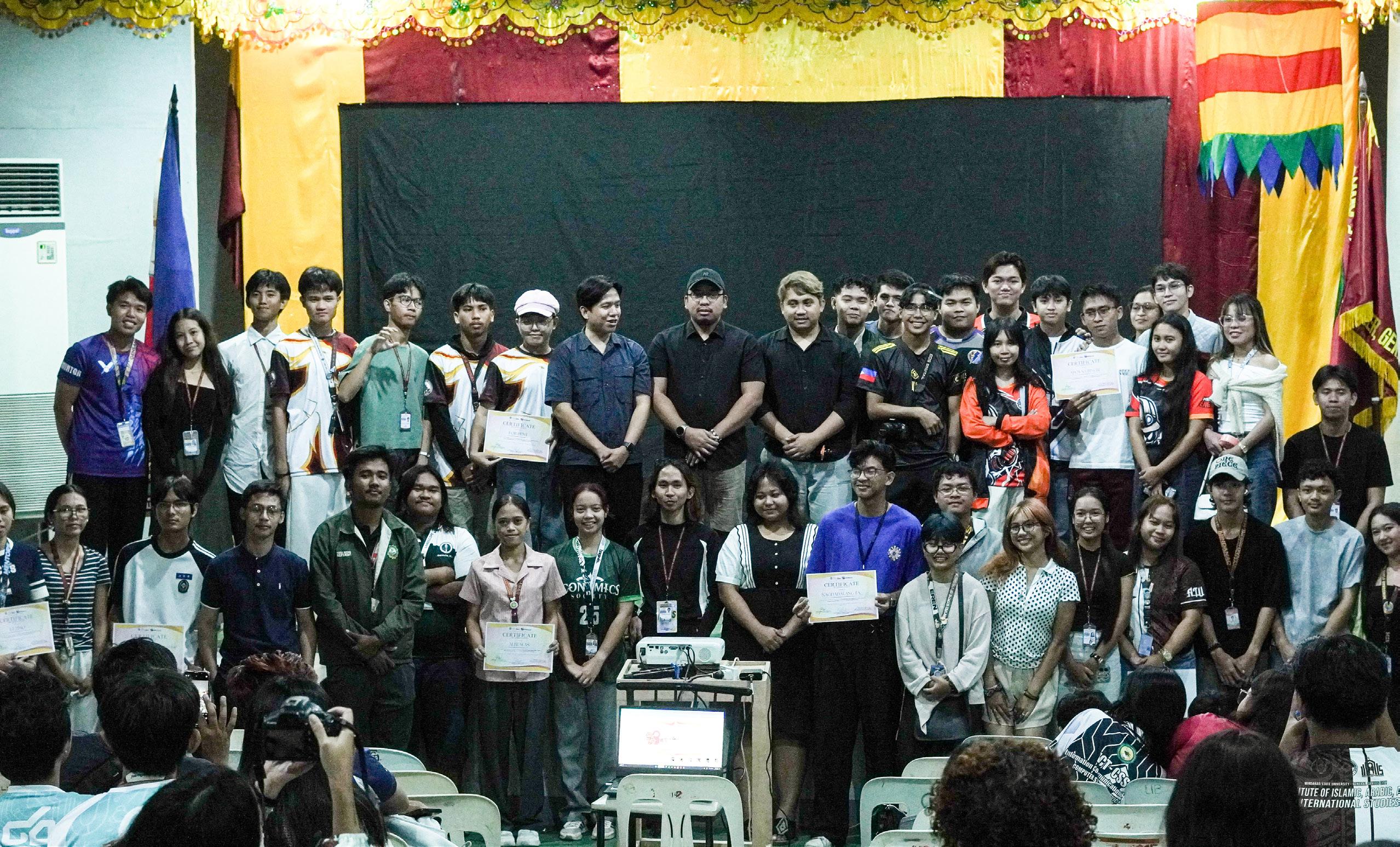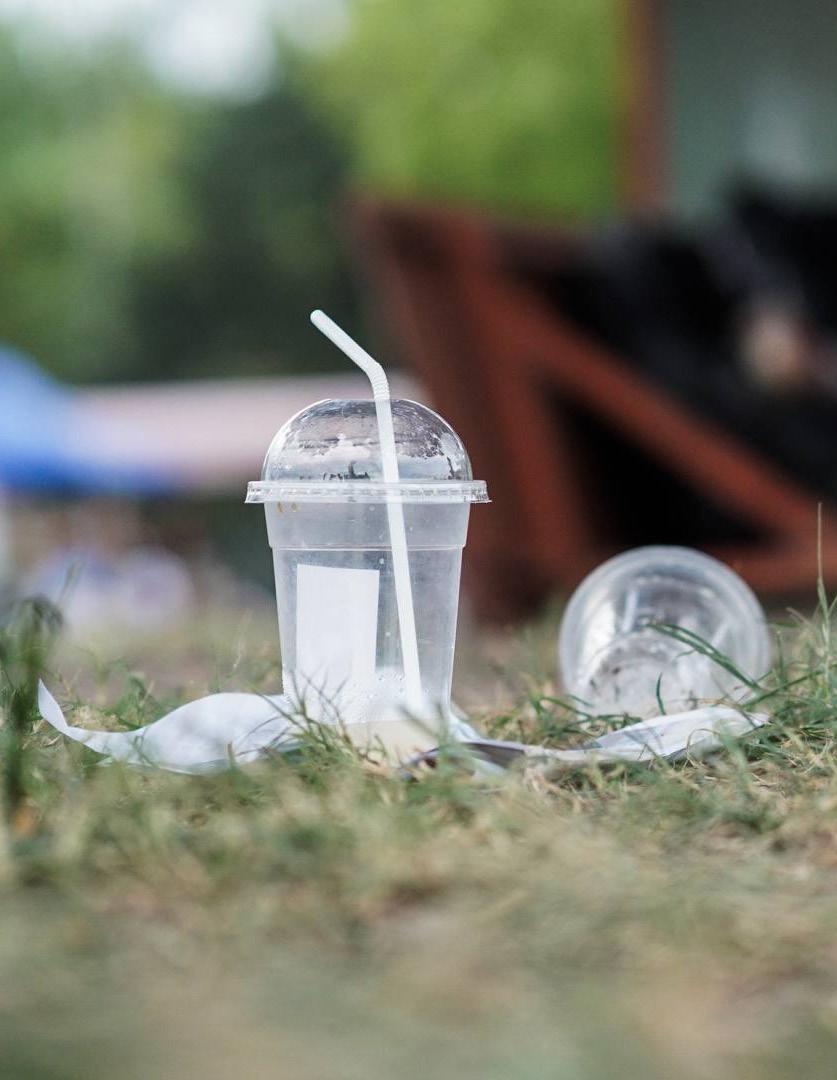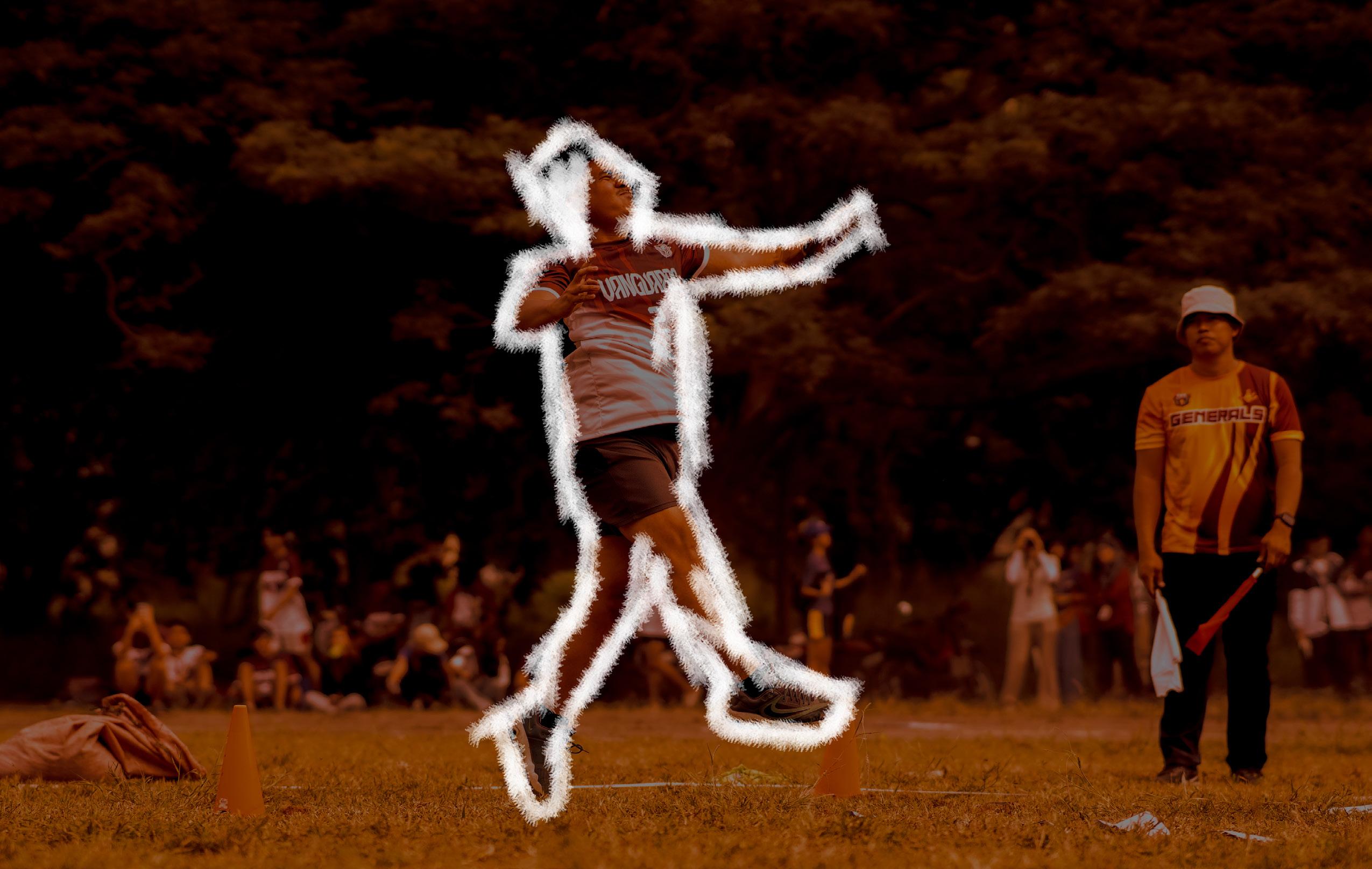

MSU-GSC introduces SDG-based CDP, trims article requirement, technical issues arise
JIDEAH ERVIE GAYLE BACTONG, ZYRELLE FAITH EROJO
For the first time in Mindanao State University-General Santos (MSU-GSC) intramural history, the Collaborative Desktop Publishing (CDP) officially integrated the United Nations’ Sustainable Development Goals (SDG) into the competition, this October 11, challenging student-journalists to align their articles with global issues.
Monlouie M. Sorzano, chairperson for the literary committee, emphasized that this year’s CDP sought to make participants more mindful of the global goals that their stories represent, encouraging them to recognize the impact of their writing beyond the campus setting.
“We are doing it this year with SDGs to empower our journalists to identify, to appreciate, and of course, to evaluate stories on how they can contribute to societal, more complex issues that are beyond the paper,” he expressed.
Decreased number of articles
Furthermore, Sorzano explained the
reason behind the fewer number of articles to be accomplished by the participants despite having the ‘NSPC-like’ branding.
According to him, over the previous years, the committee observed that the participants struggled to meet the required number of articles per page, prompting them to reduce the count to make the competition more realistic and achievable.
“We also need to consider that in NSPC, participants are given the entire day to complete the CDP. For this year’s intrams, we only had the afternoon, so we proportionally reduced the number of articles based on the time alloted,” Sorzano added.
Technical difficulties encountered
Meanwhile, Judie Mae Belonio, feature editor from the College of Business and Accountancy (CBAA) said, “It was challenging,” as she recalled their experience during the Collaborative Desktop Publishing competition.
She shared that their team was supposed to have four laptops but only had three, and one of them malfunctioned and failed to charge, leaving them with just two working devices.
Furthermore, the flash drive provided by their student coordinator was also corrupted, which made it harder for them to store and transfer files while racing against time to finish their output.
“We had no choice but to use two laptops for layout and writing while others wrote their articles on paper,” the feature editor expressed.
She added that the lack of equipment made their work time-consuming and placed heavy pressure on their layout artist who had to multitask to meet the deadline.
Moreover, the recognition of the winners of this year’s CDP will be announced during the upcoming Literary Night celebration on October 15.

photo by Rayjie Carillo

From GAD Film Fest to Sineskolar
MSU brews new film flavors for SDGs
MARIA NICOLE P. SILVA
From documentaries to narratives, this year’s film festival took a huge leap as the GAD Film Festival rebranded into Sineskolar, aligning its showcase with the Sustainable Development Goals (SDGs) and the university’s advocacy for inclusive and purpose-driven storytelling.
Held at the Audio-Visual Room (AVR), the screening featured films from various colleges, each exploring different genres, advocacies, and social realities through the lens of student creativity, on October 11.
The lineup included College of Agriculture’s (COA) “Talulot sa Paulitulit na Lirip,” College of Social Sciences and Humanities’ (CSSH) “Nagdadalang Ta*,” Institute of Islamic, Arabic and International Studies’ (IIAIS)“Ang Handumanan,” College of Fisheries and Aquatic Sciences’ (CFAS)
“Aliwalas,” College of Natural Sciences and Mathematics’ (CNSM) “For Rent,” College of Education’s (COED) “Ultimo,” College of Engineering’s (COE) “Apoy sa Bingit,” and College of Business Administration and Accountancy’s (CBAA) “Ma’idah.” The films tackled themes ranging from corruption and financial struggles to love, social justice, and the everyday experiences of MSUans.
“Para siyang experimental pero di namin gustong magmukhang experimental, nilagyan namin ng narrative,” said Joie Emmanuel Mansueto, director of Reapers’ entry, as he praised other colleges for their outputs and explained as to why their film was one of the unique this year, putting experimental twists.
While for Vince Visiete, last year’s Best Director, this year’s edition marked a
major shift in campus filmmaking.
It’s definitely a game changer. The filmmaking spirit is alive in MSU now. Each film shows a different side of our community—and that’s what makes it powerful,” Visiete noted.
Meanwhile, Sir Yancy Dizon and Sir Monlouie Sorzano from the Literary Events Committee shared that the Literary Night will feature the return of the Cosplay Superstar segment alongside new twists in the judging format.
Moreover, special and major awards for film will be announced on October 15, along with the other Literary Events at the MSU Gymnasium.
photo by Ravyjie Carillo



GREEN Team: Basura ng karamihan, disiplina ng iilan
Sa mga nagdaang taon, kapansinpansin ang mga plastik, pinagkainan, at samut-saring props na nagkalat sa Quadrangle ng Unibersidad tuwing Intramurals. Sa unang araw pa lang ng pagdiriwang, tila pista ng basura ang paligid: mula sa linya ng mga food stall hanggang sa harap ng mga gusali, nagkalat ang mga kalat na walang maayos na segregasyon. Sa kasalakuyuang taon ng Intramurals, muling kinakaharap ng Dakilang Pamantasan ang parehong suliranin sa kalinisan—basurang pasakit sa ating imahe at sa kalikasan, na siyang sumasalamin sa kakulangan natin sa disiplina.
Bilang tugon, inilunsad ng Office of the Vice-Chancellor Students and Services (OVCSAS) ang proyektong Green Team, na nilahukan ng 300 boluntaryong estudyante mula sa iba’t ibang kolehiyo. Layunin nitong mapanatili ang kalinisan at kaayusan sa pagtatapon ng basura sa kasagsagan ng Intramurals. Ngunit sa pagtatapos pa lamang ng unang araw, tila nabigo itong mag-ugat. Sa halip na luntiang kampanya para sa kalinisan, ang Quadrangle ay muling nabalot ng tambak na kalat—patunay na nananatiling marupok ang sistemang nais sana’y nagpoprotekta sa imahe ng Pamantasan.
Ayon sa World Health Organization (WHO), ang maling pagtatapon ng basura ay maituturing na banta sa kalusugan ng tao dahil maaari itong pagmulan ng iba’t ibang sakit at polusyon sa kapaligiran. Sa ganitong konteksto, higit na nagiging mahalaga ang maayos na pamamahala sa basura sa loob ng pamantasan, lalo pa at mas mapanganib ang panahon ngayon dahil kasabay ang flu season.
Subalit, sa papaanong paraan nagkakaroon ng katiyakan na ang mga boluntaryo at ang proyekto mismo ay may mabusisi at maayos na mekanismo upang mapanatili ang kalinisan, lalong-lalo na sa lawak ng unibersidad at sa kawalan ng disiplina ng ibang estudyante? Kung walang malinaw na sistema ng pagbabantay, sapat na
kagamitan, at konkretong koordinasyon mula sa administrasyon at sa Green Team, mananatiling limitado ang epekto ng ganitong inisyatibo.
Ayon sa isang boluntaryo, ang mga miyembro ng Green Team ay hinati sa mga grupo at itinalaga sa partikular na lugar upang mangolekta ng basura. Ang kanilang duty hours ay nahahati sa dalawang sesyon: alas-diyes hanggang alas-onse ng umaga, at alas-tres hanggang alas-sais ng hapon. Para kay Russell Ray Arcenas, epektibo naman ang Green Team sapagkat ginagampanan ng mga miyembro ang kanilang mga tungkulin. Aniya, “I would say that the Green Team of Intramurals are effective in doing the task that they are assigned to.”
Ngunit taliwas dito ang pahayag ng isa pang boluntaryo na si Roderick Torres. Ayon sa kanya, “For me po, I think it’s working but not as effective as I was expecting po because as the intramurals is on going, the amount of garbage especially plastics are greatly increasing po talaga—like if I compare it kahapon na opening ng intramurals, mas marami pa din po talaga ngayon”. Dagdag niya pa “ I saw some of our members are just taking others garbage bags and hide it on theirs to prove na may nagawa talaga sila or kaya pati yung mga garbage bags ay parang nagiging parte na din ng basura kasi kahit saan saan lang din itinatapon. I would say, parang medyo hindi lang mahigpit ang mga rules sa green team and I’m afraid na ginatake advantage lang sa uban ang medyo maluwag na rules para makatakas sa ilahang duties and responsibilities.”
Dito nagiging malinaw ang ugat ng problema: kakulangan sa patakaran, pangangasiwa, at disiplina. Layunin man ng proyekto na mapaigting ang kalinisan at maipakita ang kahalagahan ng wastong pamamahala ng basura sa pamantasan, isang malaking kabalintunaan kung ang mismong mga boluntaryo ng naturang programa ang nagiging pasimuno sa pagkakalat nito. Sa halip na maresolba, nagiging mas magulo ang sitwasyon dahil sa salungat
na pagkilos at pananaw sa pagitan ng layunin ng proyekto at ng mismong mga kalahok nito.
Kung nais talagang mapatibay ang Green Team, kinakailangan ang mas istriktong pagpapatupad ng mga patakaran at mas malinaw na mekanismo sa operasyon. Dapat ding tiyakin ang masusing pagsubaybay sa bawat boluntaryo—mula sa kanilang takdang tungkulin hanggang sa mga lugar na kanilang nasasakupan—upang matiyak na epektibo ang kanilang serbisyo.
Subalit, hindi dapat ibunton ang buong responsibilidad sa mga estudyante. Higit na kinakailangan ang aktibong papel ng administrasyon sa pagtataguyod ng kalinisan sa pamamagitan ng mga konkretong hakbang tulad ng pagtatayo ng sapat na basurahan sa bawat lugar, regular na pangongolekta ng basura, at mas maayos na sistema ng segregasyon. Kung tutuusin, ang kalinisan ay hindi lamang usapin ng disiplina kundi ng sistematikong pamamalakad.
Sa mas malalim na antas, ito rin ay pagsubok sa pagkakakilanlan ng bawat MSUan. Bilang mga haligi ng kapayapaan, nararapat lamang na maging ehemplo tayo ng disiplina at malasakit sa kapaligiran. Paano natin maitataas ang karangalan ng Dakilang Pamantasan kung hindi natin kayang pangalagaan ang sarili nating bakuran? Bagama’t madalas na binabalewala, kahit ang pinakamaliit na basura ay nag-iiwan ng bakas ng kapabayaan na unti-unting kinakain ang dangal ng ating pamantasan. Ang disiplina ay hindi maaaring iasa lamang sa iilan; ito ay kolektibong tungkulin at isang pananagutan. Hindi lamang ang Green Team ang tagapagpanatili ng kalinisan, kundi responsibilidad ito ng bawat estudyanteng nagtataglay ng titulong ‘iskolar ng bayan’. Sapagkat ang tunay na diwa ng Intramurals ay hindi nasusukat sa sigla ng parada o sa dami ng hiyaw at palakpakan, kundi sa kung paano natin pangalagaan ang espasyong nagbibigay-buhay sa ating lahat.
JASMINE JOY PANES, ALLYNA SHARIE COLANO, MELBEN SALUTAN
photo by Adrian Joven
Two Faces of Truth at SINEskolar 2025
HEZEL ANN SULAN

Cinema has long been more than just entertainment—it speaks for truth, imagination, and identity. In the Philippines, films have played a vital role in shaping public consciousness, capturing both the dreams and the struggles of its people. Whether through heartwarming family stories or hard-hitting documentaries, Filipino films have the power to reflect who we are, who we’ve been, and who we aspire to be.
In recent years, it has become even more important to uplift and support the voices of young Filipino filmmakers, especially students who create with limited resources but limitless passion. This is exactly what SINEsk olar 2025 celebrates: a creative movement under the 52nd Founding Anniversary and Intramurals of Mindanao State University – General Santos, where young MSUan filmmakers bring stories to life to move minds and hearts. Aligned with the goals of sustainable development, many of this year’s entries are rooted in real experiences, tackling justice, culture, poverty, mental health, and identity—presenting different faces of truth.
Among the many powerful stories shared this year, two films are based on true events that reveal contrasting, but equally compelling, truths: Apoy sa Bingit confronts systemic injustice with fire and urgency, while Ma’idah explores the quiet resilience behind unconditional love. Though different in tone and treatment, both films show how MSUans tell stories that needs to be seen, heard, and felt.
Of Justice Slipping in Silence
Apoy sa Bingit tells a story that burns deep into the reality of injustice that too often goes unnoticed. Directed by Reiza Alera from the College of Engineering, the film is based on the true account of Sheila Gil Lu-ayon, a mother who survived the brutal loss of her husband during a violent police raid. “Sa 20 na tao na gi raid that time sya lang yung pinatay, na hindi nanlaban based sa autopsy. This was well-researched talaga,” Alera stated.
Telling a story like this was never going to be easy, and the process behind the film was its own kind of chaos. “Wala jud miy apil sa meeting ba kay wala mi na inform, kung kanus-a mi na inform kung kanus-a ang deadline, mao pa tung day na magpasa ug poster,” she laughed. The script, which included interviews with the real people involved, was written in a week. Filming stretched over two intense days—one lasting 21 hours straight, and another pushing through fatigue just to stay on schedule. “Wala kaming tulog, kasi gina maximize namin ang budget kay mahal man kaayo kay naga rent lang man kami ng gamit, if may other day na naman kami so, another gastos na naman.”
Alera knew this story had to be told. The title itself carries the weight of everything the film stands for. Apoy comes from a lesson the protagonist’s mother once told her. A wisdom from childhood that stays with us when the world begins to feel heavy. Bingit, reflects the fragility of the lives portrayed in the film: how easily things could have gone differently. The man at the center of the story was so close to choosing a better path, close to change—yet he never got the chance. Shot before he could take that final step. That closeness, that almost, is where the truth lives.
Tenderness in Unnoticed Sacrifices
If Apoy sa Bingit burns with fury, Ma’idah soothes with compassion. The title, which means “divine nourishment” in Islam, tells the film’s central message about love, sacrifice, and the strength of a mother. Directed by Christian Miayo from the College of Business Administration and Accountancy, the film draws from a real story of a woman who once lived as an OFW in Saudi Arabia but returned home to rebuild her family and herself after tragedy.
Miayo’s inspiration for Ma’idah came from a story they discovered about a woman selling pastil near the gym who quietly helped students in need without expecting anything in return. When her engineer husband died she was
forced to return to the Philippines to care for their struggling daughter, who faced emotional hardship adjusting to life away from her mother and her father’s death. With their savings depleted, the woman accepted help from a relative to run a food stall so she could stay close and support her daughter.
Unlike his usual genre of thrillers and horror, Christian stepped out of his comfort zone to direct a drama. “Forte ko ang narrative film, kaso I’m not into drama, I’m into suspense, horror thriller,” he admitted. “Mabigat pala sa feeling mag shoot ng may iyakan na film, but it’s an honor, an opportunity na maging drama yung concept namin.” The production faced its own hurdles: tight schedules, power interruptions, and sleepless nights. Even with limited resources, the team poured their efforts into ensuring cultural sensitivity and authenticity. They collaborated with the Muslim Students Association (MUSA) for appropriate costumes and accurate representation, carefully avoiding missteps in language or portrayal.
More than just a story about student life, Ma’idah sheds light on the quiet burdens carried by mothers that are often unnoticed. It tells a face of truth rarely talked about: that behind every student trying to survive, there is a parent struggling too. Love, especially a mother’s love, often takes the form of small, difficult choices made every day without recognition.
With the other films presented in the event, Apoy sa Bingit and Ma’idah prove that cinema, especially in the hands of student filmmakers, is still one of the most powerful tools for truthtelling. And in a world where empathy is often in short supply, films like these help us see lives we might otherwise overlook. They reveal pain, love, injustice, and resilience; truths that are personal, and universal.
Legendary Mentors sweep Anglers in straight sets to open sepak takraw campaign RIVALRY RENEWED
Written by Vaness Villafuerte
Reigniting last year’s championship rivalry, the College of Education (COEd) Legendary Mentors opened their 2025 Intramurals sepak takraw campaign with a commanding 3–0 victory over the College of Fisheries and Aquatic Sciences (CFAS) Anglers at the University Sepak Takraw Court, October 10.
The Legendary Mentors surged to an early 6–2 lead in the opening set, fueled by the leadership of Adrian Cañas and the explosive kicks of Aldous Raphael Tangpos.
Despite the Anglers’ efforts to rally through Reymon De Pedro and Carl Ven Caparoso, COEd held their ground with steady composure and teamwork to take the first set, 15–11.
Building an 8–4 advantage and capitalizing on the Anglers’ midset errors, the Legendary Mentors unfolded the second set in a similar fashion.
Maintaining their rhythm, the Legendary Mentors stretched their lead to 12–5 before closing out the match, 15–7, completing a clean straight-sets victory.
After the game, team captain Cañas shared that their preparation and discipline played a vital role in their win.

“Nag-prepare gid mi maayo kay bilog gid ang bola. Wala mi nagpakumpiyansa kay naa man gyud chance nga mapildi mi, naa sad chance nga madaog mi,” Cañas said.
He expressed his happiness over their strong performance, noting how it contrasted with last year’s hardfought championship series against the same opponent.
“Happy kaayo mi kay straight sets win lang namo ang CFAS karon, kay last year naglisod gid mi sa ilaha,” he added.
Cañas also mentioned that the team prioritized safety throughout the match, given their upcoming participation in the MASTS tournament.
“Among sabot gid kay mag-iwas mi sa disgrasya kay mas priority namo ang MASTS kaysa intrams. Sabot gid namo ni tanan, ug advice sad sa among
Legendary Mentors clinch winners bracket berth over defending champs Asteegs after tight
2-point margin
in men’s darts singles

Despite the nervous tremble that crept into his throw, Joseph Carl Andres of the College of Education (COEd) Legendary Mentors held his composure and laser focus to defeat the defending champion Cyrus Manriquez of the College of Engineering (COE) Asteegs, sealing a sharp 3–1 victory on the scoreboard during their men’s darts singles matchup at the University Gymnasium today, October 11.
Entering the game, Andres calculated his first strike and drew first blood in the opening leg, checking out from eight points with a precise double-four finish to claim early control and put the defending champion on alert, 1–0.
The COEd stayed composed yet relentless in the second leg, channeling his trademark enthusiasm and fierce focus to extend his lead with another clean eight-point checkout, keeping the momentum firmly in his grasp and moving a step closer to securing a spot in the winner’s bracket.
Refusing to fold, title defender Manriquez denied
the sweep as he flashed his championship form, finding his rhythm with a well-calculated shot to claim his first leg win and extend the match, 2-1, reigniting his confidence on the board.
Still on the run for a one-leg closer to victory, Andres refused to let Asteegs bet to force another extension, sealing the match with a flawless fourpoint checkout to secure a 3–1 triumph and raise the banner of the COEd in the winner’s bracket.
“Kulbaan jud kay hantud karon nagakurog akoang kamot, pero magkamang pa jud na ang Engineering para makabawi,” Andres said, keeping his humility intact as he believed the defending champions from COE would crawl their way back for redeeming themselves on their territory.
From bronze finishers to bracket contenders, the Legendary Mentors have set the tone early, as Andres’ triumph over Asteegs signals a renewed quest for redemption.
Written by Princess Grace Tesnado
photo by Rayjie Carillo


Vanguards storm past Reapers as ‘in pain’ Pandong spark 10–0 softball rout in Intrams season opener
JOSEPH CARL ESTRERA
Fueled by ironhand resolve, injured catcher Marian Pandong stood unshaken behind the plate as the Vanguards of the College of Social Sciences and Humanities (CSSH) blasted the College of Agriculture (COA) Reapers, 10–0, in their softball opener at the University Softball Field on October 11, setting the tone for a powerhouse season ahead.
Opening the first inning with fire, the CSSH erupted for six blistering runs, capitalizing on the COA’s loose defense while pitcher Shakira Marcillana held firm on the mound to keep their hitters at bay.
With their defense tightening to near perfection, the Vanguards shut down every Reaper attempt to rally, sealing the win after three costly miscues on the mound ended the game for good, all while catcher Marian Pandong, playing through injury, anchored the team with unwavering composure.
“Ang mas gina-problema ko talaga
entering the game is injured ako, and wala akong sub catcher. Pinakiusapan talaga ako na if kaya three innings na walang sub, and in God’s grace talagang nakaya ko,” Pandong shared after the game.
The win carried extra weight for the CSSH, as several key players, including team captain Jean Aljas and vice captain Sham Ochia, played their final game of the season before leaving for an academic event in Zamboanga, buzzing the dugout with pride and

emotion, knowing the victory was a fitting send-off for their leaders.
“Ang akong maingon lang kay congrats, and tomorrow kay wala man mi, kabalo mi nga kaya ninyo na,” said Aljas.
Pandong, who is expected to assume the captain’s role next season, admitted feeling both grateful and anxious about the responsibility, noting that most of their players are still beginners. “Worry talaga ako,” she said, but remained confident that with faith and determination, “laban lang parin,” as the Vanguards aim to carry their winning momentum forward.
Meanwhile, the Wizards of the College of Natural Sciences and Mathematics got off to a strong start, defeating the Tycoons of College of Business Administration and Accountancy, 7–2 with timely hitting and steady pitching, as part of a morning slate dominated by commanding victories that set the pace for the season ahead.

Mula Pagkalugmok Hanggang Tagumpay: Ginuntuang tapon ni Ortiz, beastmode sa men’s discus throw
JAMES VICTOR TALAY
“Answered Prayer”
Ganiyan kung ilarawan ni Vanguards’ discus thrower Jubil Chloe Ortiz ng College of Social Sciences and Humanities (CSSH) ang kaniyang pagkapanalo, matapos tumibag ng 23.58 metrong tapon, sa finals ng men’s discus throw finals ng Intramurals 2025, sa ROTC Field ngayong araw.
Determinasyong magpalakas ang naging puhunan ni Ortiz upang makabangon mula sa kanyang pagkalugmok sa ikatlong puwesto noong nakaraang taon—na siya ring nagsilbing motibasyon upang lalo pa siyang manggigil, resulta upang tuluyan niyang makuha ang inaasam na gintong medalya.
Biglang nabuhayan ng loob si Ortiz pagsapit ng finals, matapos mabitin sa unang pwesto kontra kay Legendary Mentors power thrower Joseph Brian Seit ng College of Education (COEd) sa ginanap na selection stage.
Isang mapangwasak na tapon mula sa thrower ng CSSH ang siyang nagrehistro ng 23.58 metrong rekord ang kaniyang naging pambawi, na bigong malampasan ng kanyang mga katunggali.
Inspirasyon ni Ortiz ang kanyang tagapayo at mga kasamahan sa CSSH Athletics Team, na siyang isa sa mga pinaghuhugutan niya ng lakas at determinasyon.

“Inspire others as you inspire yourself,” ani niya sa isang panayam matapos ang laban.
Samantala, nadismaya naman sa ikalawang puwesto si Seit ng COEd matapos madulas sa 22.87 metrong iskor, kahit siya ang nanguna sa selection stage— dahilan upang mapasakamay niya ang pilak na medalya.
“Lacking pa ko when it comes to technique kag strength, there’s always a room for improvement man japon,” sambit ni Seit. Dagdag pa niya, kailangan pa niyang patibayin ang kanyang pundasyon sa teknik at lakas ng pagbato.
Sa kabilang banda, nakuha naman ni Asteeg Jerry Boy Demayo ng College of Engineering (COE) ang bronseng medalya matapos magtala ng 22.56 metrong tapon.
MEN’S DISCUSS THROW:

photo by Ashley Loyloy
photo by Loui Gee Tamalon

